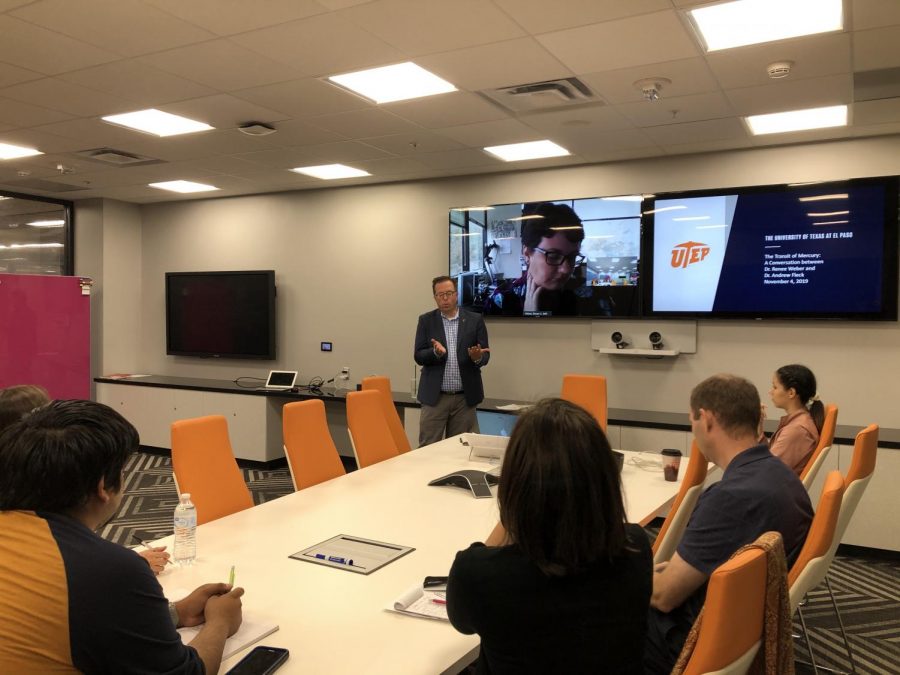Andrew Fleck, a UTEP associate professor of English, had a conversation via Skype about the transit of Mercury with Renee Weber, a research scientist specializing in planetary seismology at NASA’s Marshall Space Flight Center in Huntsville, Alabama.
The discussion took place on Nov. 4 in the university library’s collaboration lab. The meeting was open to the public and a handful of students and other faculty were in attendance.
Mercury’s silhouette will appear across the sky on the dawn of Monday, Nov. 11, and will be visible until 11 a.m. that morning.
A rare astronomical event, Mercury’s transit is only viewable from earth a mere dozen times a century, with the next visible transit not occurring until 2032.
“If you think about all of the things that have to happen, first of all, both the transiting planet and the earth have to be on the same side of the sun, same time, and their orbits have to be in the same plane at the same time,” Weber said. “Then it has to be daytime, so the sun has to keep up where you are.”
Fleck provided historical insight on the planet’s transit.
“It was only in the 1600’s when an astronomer called Johannes Kepler had calculated a number of movements of the celestial spheres based on a new understanding of the universe. This understanding was based on the Copernican system, in which the earth goes around the sun, instead of the other way around which the sun goes around the Earth,” Fleck said.
Weber then discussed the safe ways to look at the astronomical occurrence.
“(If) you have a pair of eclipse glasses left over from the eclipse know, you will want to make sure that they aren’t scratched or damaged,” Weber said. “If you have welder’s glass, that’s another way to look, or if you have a specialized solar filter.”
Interested students have the opportunity to observe on campus in front of UTEP’s Physical Sciences Building on Hawthorne Street from 9 a.m. to 11 a.m.
The El Paso Community College will also provide a viewing opportunity at the Valle Verde campus on the east side of Building B.
Finally, the transit will also be streamed online at jpl.nasa.gov.
Margaret Cataldi may be reached at prospect[email protected]












